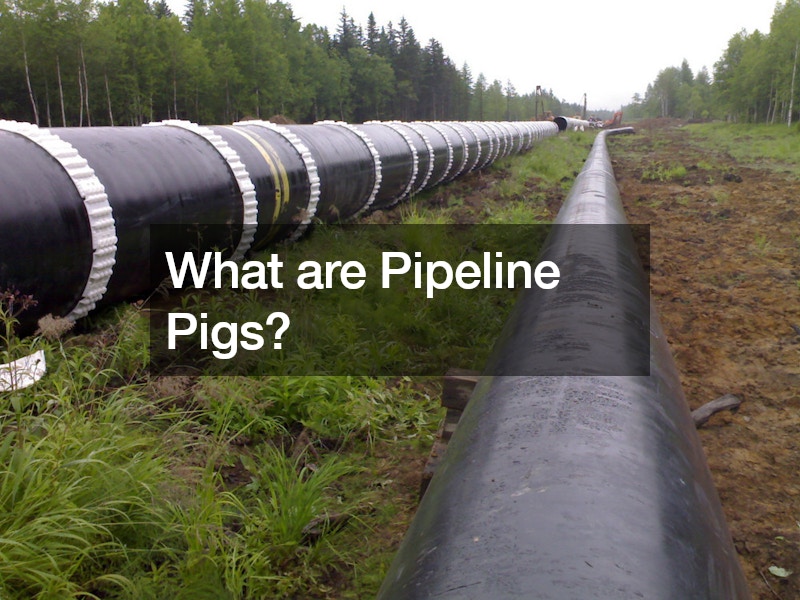

Pipeline pigs, often simply referred to as “pigs,” are versatile devices used in the maintenance, cleaning, inspection, and testing of pipelines in various industries. Despite their name, these are not actual animals; rather, they are sophisticated tools designed to perform a wide range of functions within pipelines. In this article, we will explore what these are, how they work, and the different types and applications of these.
Overview of Pipeline Pigs
These are cylindrical or spherical devices inserted into pipelines and propelled by the flow of product (liquid or gas) through the pipeline. These devices are equipped with various components, such as brushes, scrapers, magnets, sensors, and instruments, depending on their intended function. They are typically made from materials such as polyurethane, rubber, or steel, and they come in different sizes and configurations to accommodate different pipeline diameters, pressures, and applications.
How Pipeline Pigs Work
The operation of these depends on the specific function they are designed to perform. Generally, these are inserted into the pipeline through a pig launcher, which is a specialized fitting located at one end of the pipeline. Once inside the pipeline, the pig is carried along by the flow of product, traveling from the launcher to the receiver at the other end of the pipeline.
As the pig moves through the pipeline, its components interact with the internal surface of the pipeline, performing various tasks such as cleaning, inspecting, or separating different products. The pig’s movement generates pressure waves within the pipeline, which helps dislodge debris, remove buildup, or detect anomalies in the pipeline wall. In some cases, pigs may be propelled through the pipeline using an external force, such as compressed air or a pigging unit, especially in pipelines with low flow rates or gravity-fed systems.
Types of Pipeline Pigs
There are several types of these, each designed for specific functions and applications. Some common types of these include:
- Cleaning Pigs: Also known as “scraper pigs” or “brush pigs,” cleaning pigs are designed to remove debris, scale, rust, and other buildup from the internal surface of pipelines. These pigs typically feature abrasive brushes, scrapers, or blades that scrub the pipeline walls as they pass through.
- Inspection Pigs: Inspection pigs, also called “smart pigs” or “intelligent pigs,” are equipped with sensors, instruments, and imaging devices to inspect the condition of the pipeline wall, detect defects, and collect data on pipeline integrity. These pigs are essential for identifying corrosion, cracks, dents, weld defects, and other anomalies that may compromise pipeline safety.
- Gauging Pigs: Gauging pigs, also known as “geometry pigs” or “caliper pigs,” are used to measure the internal diameter of pipelines and detect changes in pipe geometry, such as ovality, dents, or deformations. These pigs help ensure that the pipeline remains within specified tolerances and can identify areas of concern that may require further inspection or maintenance.
- Sealing Pigs: Sealing pigs, also referred to as “batching pigs” or “product separation pigs,” are designed to separate different products or fluids within the same pipeline. These pigs feature sealing elements or cups that create a barrier between products, preventing mixing or contamination during product transitions.
Applications of Pipeline Pigs
These are used in a wide range of industries and applications, including:
- Oil and Gas: These are extensively used in the oil and gas industry for pipeline maintenance, cleaning, and inspection. They play a crucial role in ensuring the integrity and efficiency of oil and gas transmission pipelines, as well as in offshore drilling and production operations.
- Chemical and Petrochemical: In chemical and petrochemical plants, these are used to clean and maintain process pipelines, remove contaminants, and prevent product contamination.
- Water and Wastewater: Pipeline pigs are employed in water and wastewater treatment plants to clean and inspect pipelines, remove sediment, and improve flow rates.
- Food and Beverage: In the food and beverage industry, pipeline pigs are used to clean and sanitize pipelines used for transporting liquids such as milk, beer, and soft drinks, ensuring product quality and safety.
- Pharmaceutical: In pharmaceutical manufacturing facilities, pipelines are used to clean and sanitize pipelines used for transporting pharmaceutical ingredients and products, ensuring compliance with regulatory standards and quality control requirements.
In Conclusion
Pipeline pigs are indispensable tools for the maintenance, cleaning, inspection, and testing of pipelines in various industries. By performing tasks such as cleaning, inspecting, gauging, and sealing pipelines, these versatile devices help ensure the integrity, efficiency, and safety of pipeline systems. Understanding the different types and applications of these is essential for selecting the right tool for the job and maximizing the performance of pipeline operations.
.






